Crane Operator Hand Signals and Their Importance
Anyone who has worked in construction knows that coordination is vital. A well-run worksite is a thing of beauty, a finely choreographed series of events that move a project from breaking ground to project completion. But with various trades often working at once, noise can lead to a breakdown in communication and coordination. Folks managing heavy machinery need to be especially tuned in to how they’re operating in any given space.
Key Crane and Hoist Hand Signals
Picture it: an operator has a heavy, awkward load suspended in midair – how can they follow the team’s instructions? Crane hand signals, that’s how. This technique is an old one, but it’s highly effective and free to use. The Occupational Safety and Health Administration (OSHA) has a standard method of signaling that can be used across jobsites. Check out these common signals and what they mean:
Stop signals
indicate that operation should cease
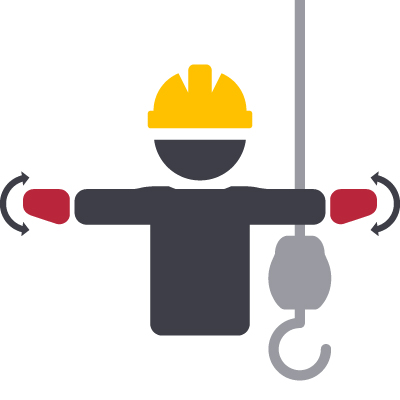 |
Emergency stopBoth arms are extended horizontally to the side with palms faced down and arms are swung back and forth |
|
 |
StopA single arm is extended to the side with palm facing down and the arm is swung back and forth. |
|
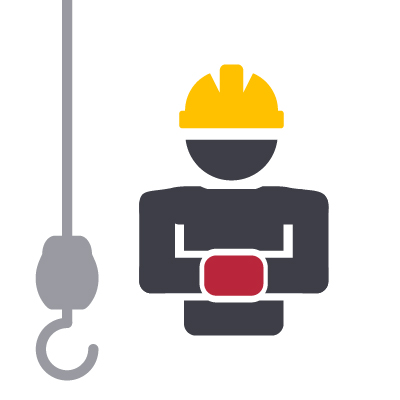 |
Dog EverythingBoth hands are clasped together at waist level. |
|
Boom signals
instruct operator how to maneuver
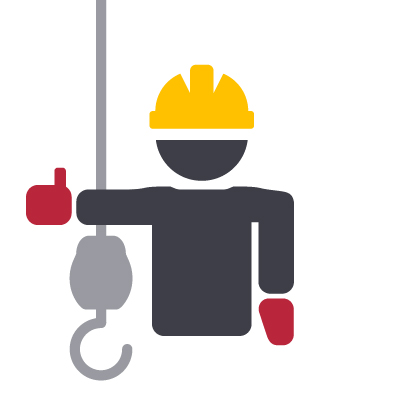 |
Raise boomOne arm is extended horizontally to the side and with a closed fist a thumbs up is given |
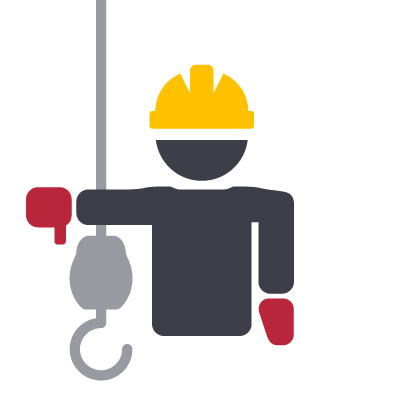 |
Lower boomOne arm is extended horizontally to the side and with a closed fist a thumbs down is signaled |
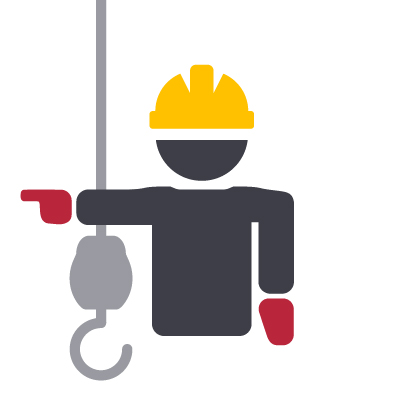 |
Swing boomOne arm is extended horizontally to the side and the index finger will point in the direction to swing the boom |
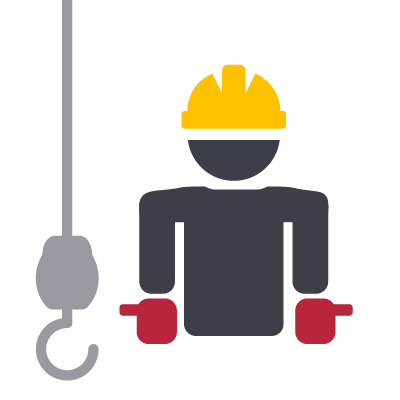 |
Extend telescoping boomHands are placed at the waist and thumbs are pointed outward from a closed fist |
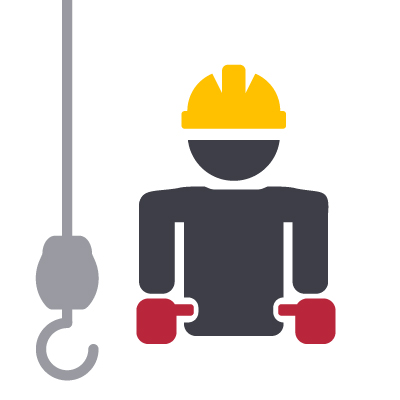 |
Retract boomHands are placed at the waist and thumbs are pointed inward from a closed fist |
Load signals
dictate what the operator will do with the load once it’s lifted
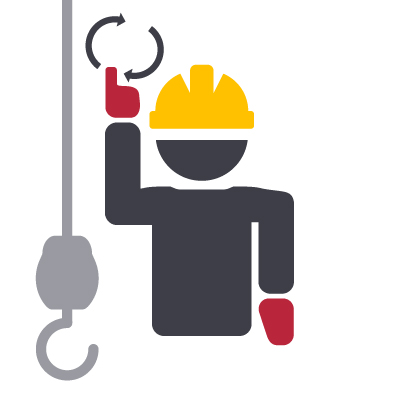 |
Hoist loadOne arm is extended vertically overhead with the index finger pointing and small circles are made |
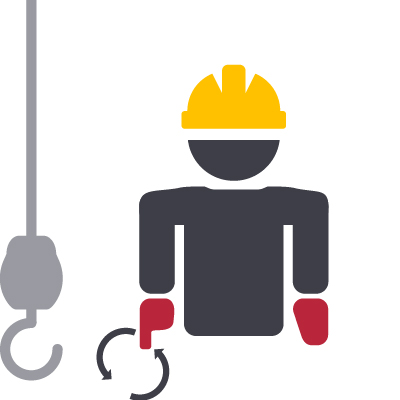 |
Lower loadOne arm is extended down, to the side, with the index finger pointing and small circles are made |
Speed signals
Allows for precise control of pace of any movement
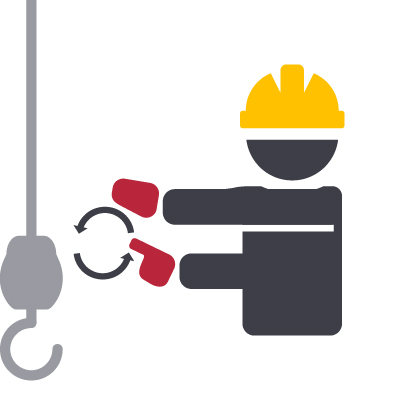 |
Move slowlyA horizontally outstretched hand is placed above the opposite hand that is signaling the action |
Additional signals
multi-functional requests and traveling instructions
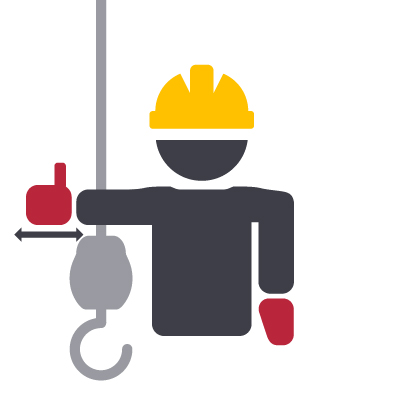 |
Raise boom and lower loadArm is extended horizontally to the side with thumb facing up, remaining fingers are repeatedly open and closed |
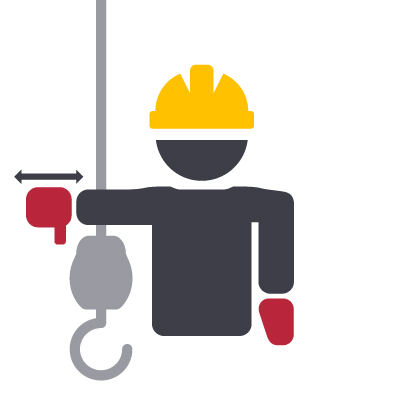 |
Lower boom and raise loadArm is extended horizontally to the side with thumb facing down, remaining fingers are repeatedly open and closed |
 |
Travel/Tower TravelBody is turned toward load and arm is extended forward with hand and fingers extended and bent upward, arm is repeatedly bent and extended in a pushing motion |
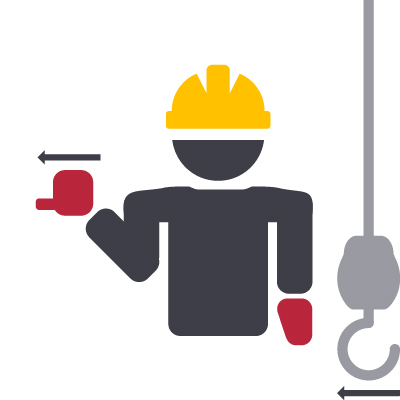 |
Trolley travelArm is bent at the elbow and hand is held horizontally and palm up at shoulder level while the arm is extended slightly and hand is jerked in the desired direction of travel |
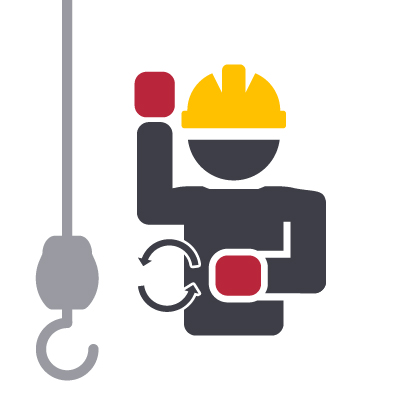 |
Crawler crane travel, one trackOne arm is held overhead with fist raised to indicate locked track while other fist is held at waist and rotated in the desired direction of travel |
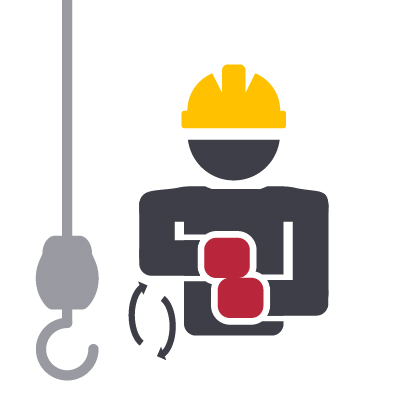 |
Crawler crane travel, both tracksRotate fists around each other at waist; away from body is forward, toward body is backward |
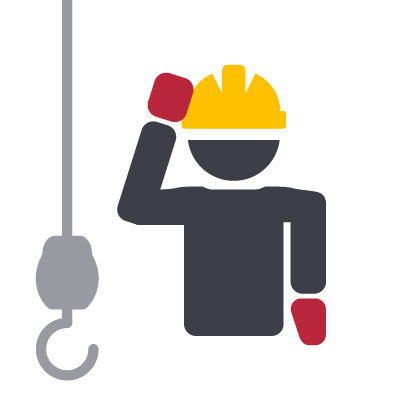 |
Use main hoistHand taps the top of head prior to regular signaling |
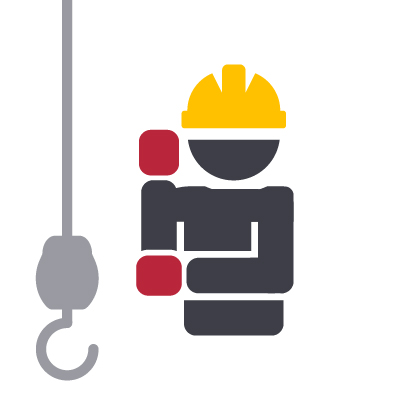 |
Use auxiliary hoistHand is in a fist and arm is bent at the elbow with forearm held vertically while other hand taps the elbow prior to regular signaling |
(View the complete OSHA Crane Operator Hand Signal pdf here.)
With these and other hand signals, the signal person can use their wider point of view to the crane operator’s advantage. They can judge whether a maneuver is safe to perform and quickly convey their thoughts. This low-tech, universal language of sorts goes far to improve safety for other workers and at times, even the general public. Accident rates are reduced and work is done safely and smoothly.
Sometimes a specific job will require maneuvers that aren’t listed here. So long as the corresponding signals are decided upon in advance, the signaler and operator will still be OSHA compliant. The main concern is that everyone stays on the same page. Of course, there might be instances where even the signal person isn’t aware of a potential danger. In this case, it’s good for other workers to at least know how to perform the “emergency stop” signal so that they can quickly convey the risk and prevent damage or injury.
Why Use Crane Hand Signals?
.jpg)
For large- and small-scale equipment operators alike, noisy environments come with the territory. Clear communication is absolutely critical, but excess noise and other disturbances can make it tricky. Digging, drilling, and piling are just some of the activities crane operators might need to maneuver around. Obstructed views are also commonplace, and trying to conduct a lift with limited visibility can put everyone at risk of serious injury.
Radio is often used to transmit instructions across a worksite, but sometimes noise gets in the way or an operator needs more targeted assistance. Crane hand signals can only mean one thing, so they provide instant recognition of the operator’s next move, as well as a quick way to know if there’s danger or if they need to cease operation.
The Valuable Role of the Hand Signal Person
A crane hand signal person acts as both eyes and ears for the crane operator. This is a weighty responsibility and requires training to ensure that they can quickly and fluently communicate, especially in stressful situations. Accuracy here can be the difference between safety and injury. A fully certified and qualified crane signal person will understand how operation varies between equipment types and is able to adjust signals as need be. They are a strong defense against risk and danger and will always be an invaluable addition to a worksite.
Learn About Our Inspections & Training
When the operator and signaler are on the same page there is full trust and confidence, making for more accurate, precise, and efficient operation. The operator can then avoid potential hazards and complete actions safely. Hand signals also contribute to a streamlined and professional manner of work, impressing clients, coworkers, and supervisors with the operators’ skill and high regard for safety. It’s really a win for all involved.
How Americrane & Hoist Corporation Can Help
Crane and hoist hand signals are a simple solution to a real-life problem that our clients face every day. Whether you’re looking for team training on operator safety, hand signals, or are in need of equipment and parts, Americrane is your go-to resource. We’re always here to help you make your jobsite a safer place to be. Get in touch for more information about our training opportunities and to schedule a session for your team. We look forward to hearing from you.
Contact Us | Hoists | Hoist Parts | Cranes | Beam Clamps | Fall Protection Equipment | Inspections & Training | About Us | Customer Reviews | Privacy Policy | Shipping & Returns
Americrane & Hoist Corporation | 13311 Enterprise Ave | Cleveland, Ohio 44135 | Phone: 216-267-9100 | Fax: 216-267-9131
All Rights Reserved 2024, Americrane & Hoist Corporation
Admin Login | Web Site Developed by Alt Media Studios







